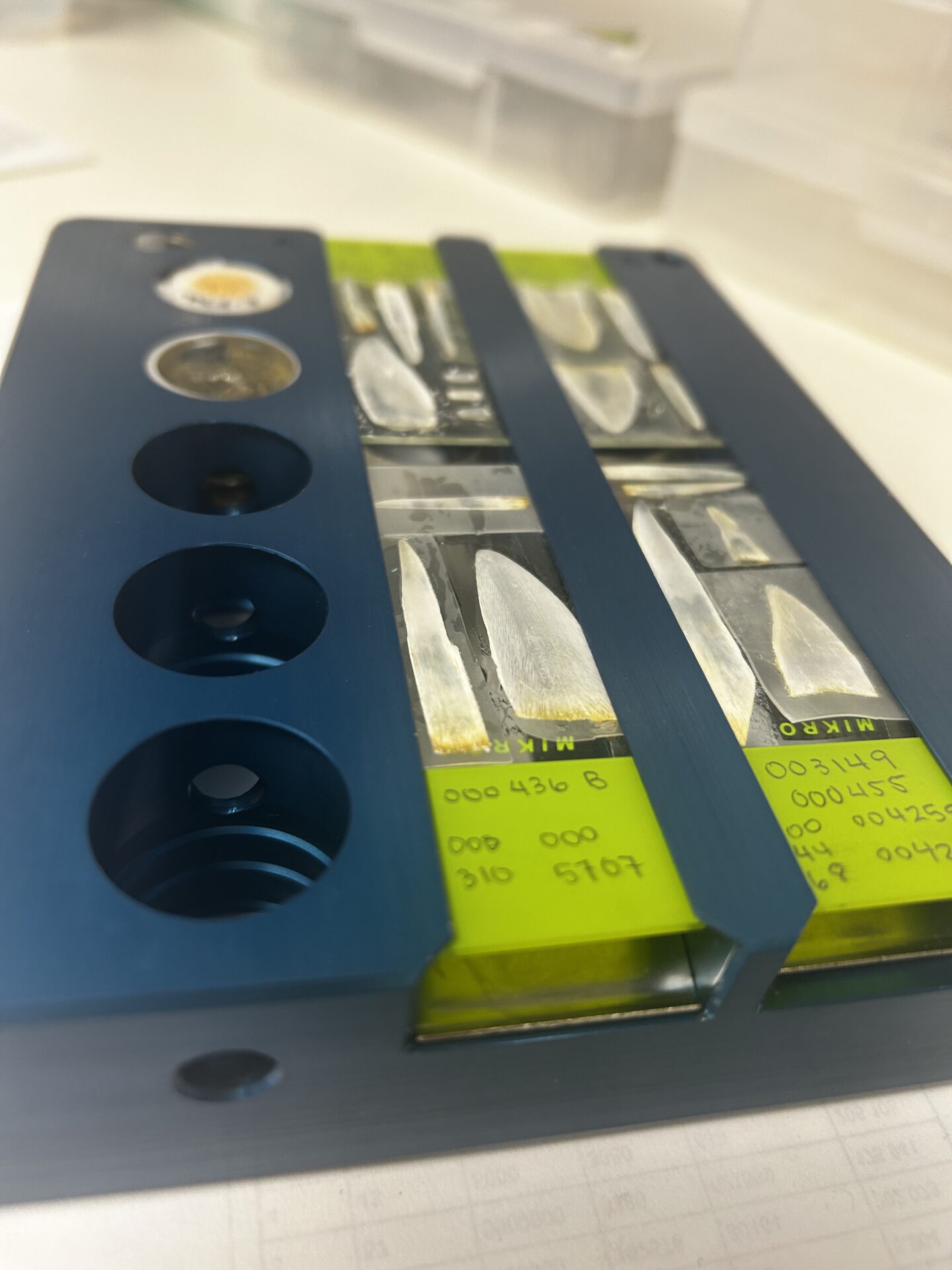The journey continues: Back in your city with four times the teeth
And now the moment of truth! I am currently at the University of Adelaide, working at Adelaide Microscopy, where a spot and/or line along each sawfish tooth is vaporised via a laser and then the chemical composition read in a process called Induction Coupled Plasma Mass Spectrometry (ICPMS).

Samples, polished, slided and ready for analysis! Photo © Nikki Biskis
Preliminary Findings
Last year around this time, I ran a pilot study of 40 spot tests, transect analyses, and even complete mapping of individual sawfish teeth. Preliminary results indicated that trace element analysis can resolve the origin at the regional level, potentially narrowing down the capture location by hundreds of kilometres. This precision allows for more accurate incorporation of rostra data into risk maps, highlighting areas where sawfish populations are most vulnerable to ongoing fishing pressures. Now, with further funding from Holsworth and Save Our Seas, we can run the remaining samples and hopefully home in even further.

Our 2024 run, ready to go. Photo © Nikki Biskis
What’s next?
As I eagerly await the full results, the question remains: What works, and what still needs investigation? The higher precision spatial data will contribute to the development of targeted conservation strategies, ensuring the long-term survival of sawfish in their northern Australian stronghold. It’s an exciting journey that not only deepens our understanding of these Australian icons but also continues momentum in innovative approaches in conservation.

'Thanks laser – I’m happy to be here too'. Photo © Nikki Biskis
And now, the best bit – on to stats. If you’re headed to the Australian Society of Fisheries Biology Conference in November, make sure to come say hello.
This project is funded by the Holsworth Grant through the Ecological Society of Australia and the Save Our Seas Foundation. We’d like to additionally thank the Queensland Department of Agriculture and Fisheries for their ongoing support of our work. This work would also not be possible without the time and expertise of the team at the Gillanders lab at the University of Adelaide, namely Dr Patrick Reis-Santos and Rhiannon Van Eck, and Dr Paul Olin and Dr Sarah Gilbert at Adelaide Spectroscopy.
